Who dreams of the untouched, 2022
Coehoorn Arnhem (NL) &
University of Coblenz (DE)
Lecture Performance, 42’00’’

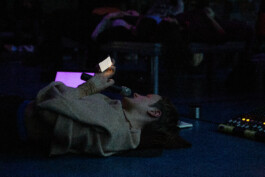
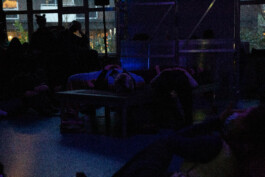
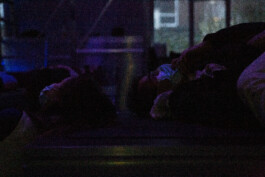
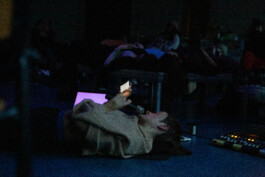
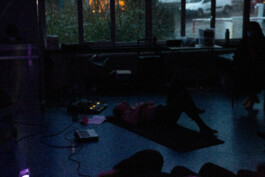
[1] The lecture provides insight into the working state of a process and rhizome-like examination of questions of physical and spatial perception, orientation and navigation.
[2] The participants are illuminated by an artificial purple light which speaks to them. The overhead video projection is occasionally backed with 3D animations by the artist Saou Tanaka, depicting Euclidean as well as cartographic representations of land(scape) and space, to which the participants’ bodies are set in relation.
[3] According to Western conceptualization, spatial orientation is always determined from an egocentric perspective. To what extent does this perspective influence one’s relationship to their environment, other living beings, and the (seemingly) inanimate? The presentation describes the mapping of untouched land, the top-down view, as an act of power promoting perceptions of “wilderness” and “otherness” that must be tamed or conquered. Reflecting a critical spatial practice, the project explores the limitations of European languages to express situatedness. It inspires imagining new perspectives on, and relationships to, bodies, land(scapes), and space.

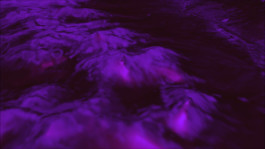
One of the elementary and essential characteristics of beings as well as objects is their location in space. Spatial perception plays a central role in guiding spatial behavior. Space is an immediate experience. Objects and people are not only locatable in space; they also own an extension in space, they are perceptible and measurable in at least three dimensions. For this description, the orientation as well as navigation, the three-dimensional Euclidean space and the Cartesian coordinate system are fundamental—at least from a European perspective.
Photos: David Přílučík
Who dreams of the untouched, 2022
Coehoorn Arnhem (NL) &
University of Coblenz (GER)






Lecture Performance, 42’00’’
[1] The lecture provides insight into the working state of a process and rhizome-like examination of questions of physical and spatial perception, orientation and navigation.
[2] The participants are illuminated by an artificial purple light which speaks to them. The overhead video projection is occasionally backed with 3D animations by the artist Saou Tanaka, depicting Euclidean as well as cartographic representations of land(scape) and space, to which the participants’ bodies are set in relation.
[3] According to Western conceptualization, spatial orientation is always determined from an egocentric perspective. To what extent does this perspective influence one’s relationship to their environment, other living beings, and the (seemingly) inanimate? The presentation describes the mapping of untouched land, the top-down view, as an act of power promoting perceptions of “wilderness” and “otherness” that must be tamed or conquered. Reflecting a critical spatial practice, the project explores the limitations of European languages to express situatedness. It inspires imagining new perspectives on, and relationships to, bodies, land(scapes), and space.


One of the elementary and essential characteristics of beings as well as objects is their location in space. Spatial perception plays a central role in guiding spatial behavior. Space is an immediate experience. Objects and people are not only locatable in space; they also own an extension in space, they are perceptible and measurable in at least three dimensions. For this description, the orientation as well as navigation, the three-dimensional Euclidean space and the Cartesian coordinate system are fundamental—at least from a European perspective.
Photos: David Přílučík